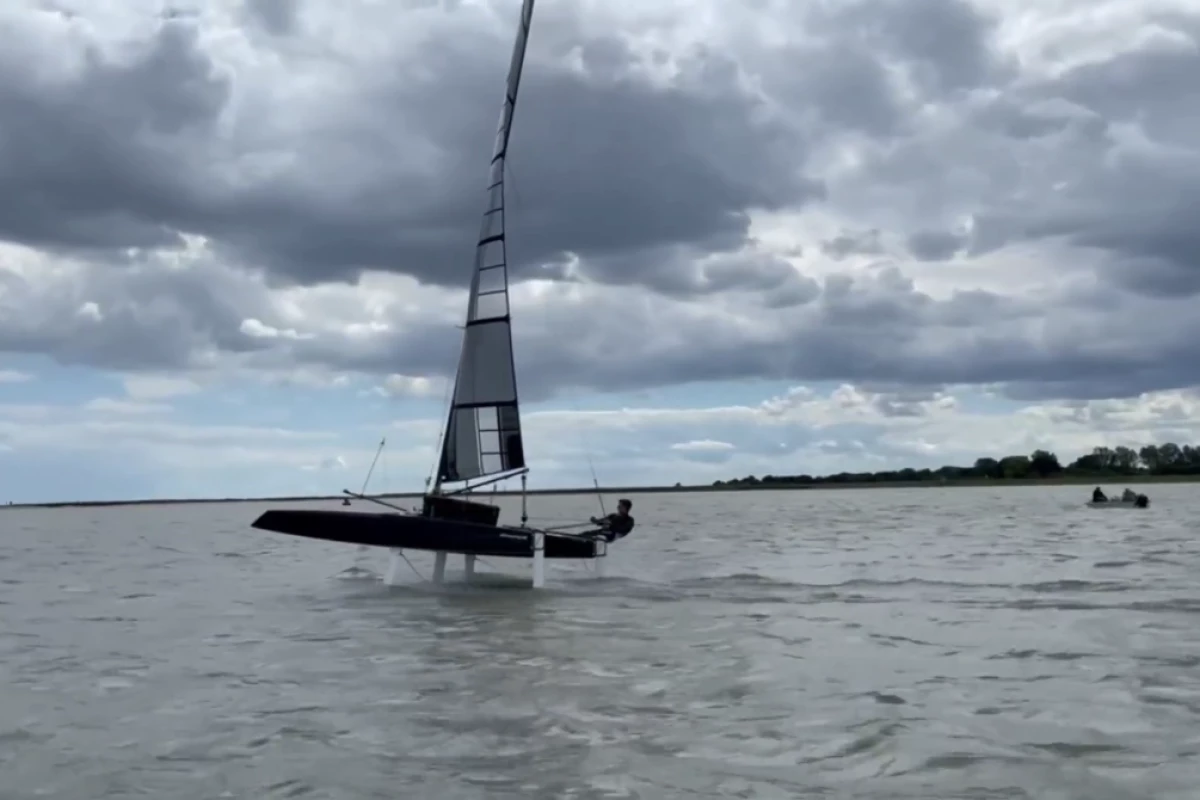Wind power is a promising source of green energy and one that could feature in the production of green hydrogen. UK startup Drift Energy shows a different spin on that idea. Instead of creating windmill-derived electricity, its plan involves using AI-routed hydrofoil sailing yachts to generate the electricity required for electrolysis. Those yachts would then deliver green hydrogen to ports around the world for use as a power source.
Drift plans its yacht-based energy system as a highly flexible, decentralized generation and distribution solution, using green hydrogen as the storage medium. The idea is for its hydrofoil sailboats to convert wind power into electricity by pulling underwater turbine-generators through, in turn powering the electrolysis that splits water into hydrogen and oxygen. The hydrogen would then be carried to nearby ports and distributed to customers.
The ocean isn't merely used to power Drift's turbines but also as the raw material for electrolysis. Each yacht would be equipped with an electrolysis plant capable of producing megawatts of hydrogen out of readily available seawater. Tonnes of hydrogen could then stored in commercial-grade tanks on the vessel before being transported back to shore.
Drift sailing yachts would operate in flexible flotillas, deployed around the globe to major ports closest to customer bases. In this way, they could be located exactly where they're needed most and easily moved to other areas when demand shifts. Drift believes it can build and deploy individual flotillas in 1/10 the time it would take to plan and build an offshore wind farm of comparable capacity.
Drift's sailing yacht prototype was adapted from a secondhand vessel built by its partner White Formula. A hydrofoil construction was an obvious choice based on its ability to cut drag and more efficiently turn wind power into the forward momentum driving the underwater turbines. Drift's hydrofoil design derives from the Americas Cup and Vendee Globe racing series.
While the Drift "flying yacht" is the face of the idea, the autonomous system navigating the fleet is the make-or-break secret to its success. Using a combination of traditional weather forecasting and artificial intelligence, the navigation software is tasked with adjusting the course of weeklong trips to ensure the best combination of wind and wave conditions for sustained power generation. The idea is for the yacht fleets to always be operating as efficiently as possible. The software can also react to real-time market shifts, rerouting boats to ports with higher demand.
Using this efficiency-optimization software, Drift's AI partner Faculty projects that the hydrofoil fleets could more than double the existing load factors of UK wind farms. Load factor is a ratio showing the amount of energy actually being produced to a system's maximum production potential over a period of time.
There's still a lot of "ifs" and unproven cutting-edge concepts in the Drift ecosystem, but the company announced its first successful sea trial last week. Its prototype yacht was able to produce 6 liters of green hydrogen in a two-hour test off the coast of Brightlingsea, exceeding company expectations.
"This is a real breakthrough in the creation of a net new renewable energy class, which is mobile, scalable and anti-fragile," Drift founder and CEO Ben Medland said after the trial. "We knew from computer modeling our concept had huge potential as it is essentially a mosaic of proven technologies such as commercial electrolysis units, turbines and hydrogen storage tanks. These first sea trials prove our energy yachts work in the real world."
Drift realizes it won't crack the green energy problem alone, calling itself an "AND" solution meant to complement existing green energy systems. As its next steps, the company will conduct additional sea trials, move forward with plans for sailing yachts capable of producing hydrogen at rates of 250,000+ liters per hour, and get multiple vessels working together for the first time. It will also be attending the Great Britain Sail Grand Prix in Plymouth, England on July 30 and 31.
Source: Drift Energy






